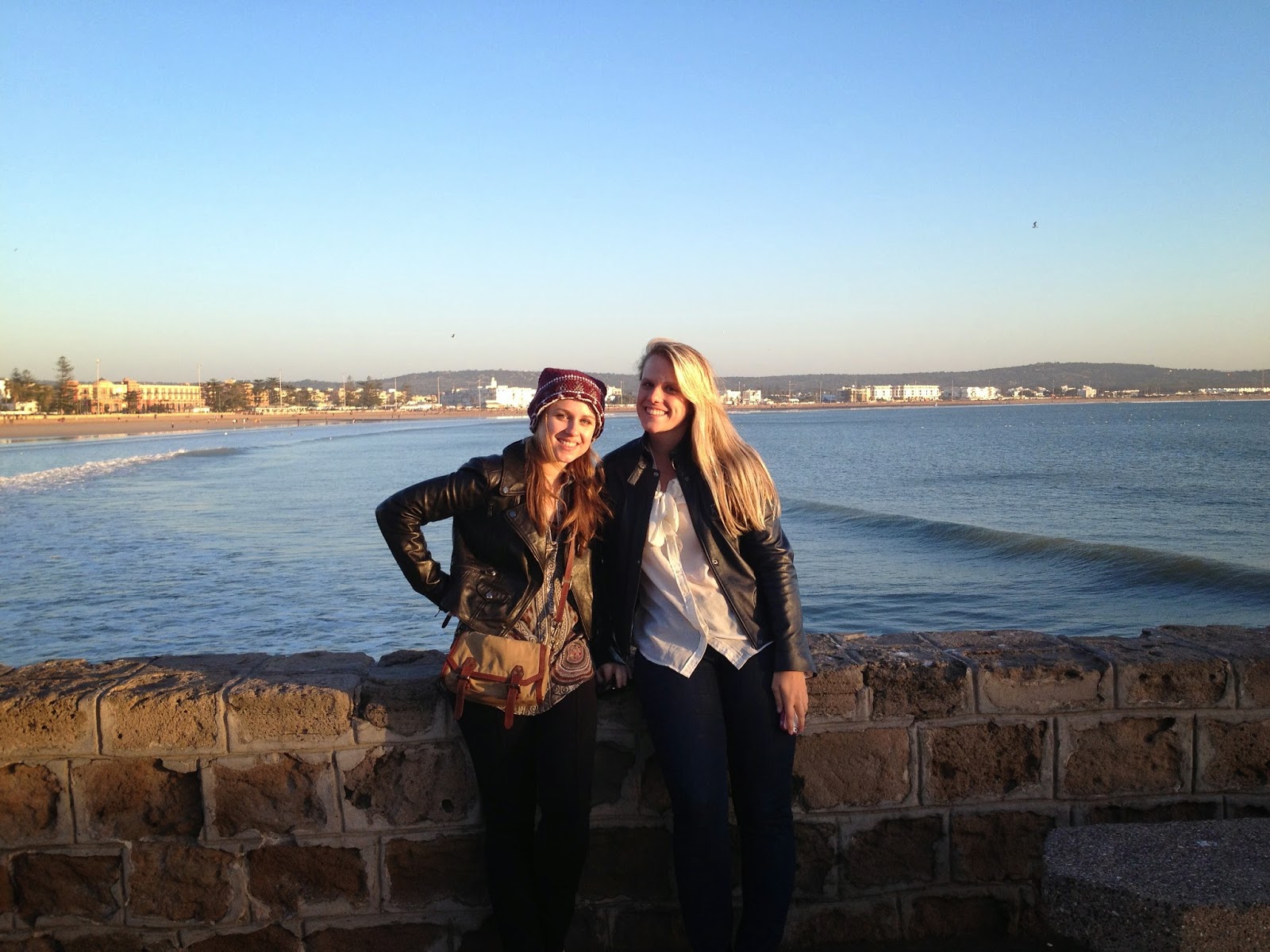Essaouira (Berber: ⵎⵓⴳⴰⴹⵓⵔ Taṣṣurt, Arabic: الصويرة, as-Ṣawīra) is a city in the western Moroccan economic region of Marrakech-Tensift-Al Haouz, on the Atlantic coast. The city was known in the time of 11th-century Geographer al-Bakri and, as he reported, was called Sidi Megdoul. In the 16th-century, a corruption of this name became known to the Portuguese as Mogador or Mogadore. The Berber and Arabic names mean the wall, a reference to the fortress walls that originally enclosed the city.
During the Middle Ages, a Muslim saint named Sidi Mogdoul was buried in Essaouira, probably giving its origin to the name "Mogador"
Portuguese establishment (1506-10)In 1506, the king of Portugal, D. Manuel I, ordered a fortress to be built there, named Castelo Real de Mogador. Altogether, the Portuguese are documented to have seized six Moroccan towns and built six stand-alone fortresses on the Moroccan Atlantic coast, between the river Loukos in the north and the river of Sous in the south. Four of them only had a short duration: Graciosa (1489), São João da Mamora (1515), Castelo Real of Mogador (1506–10) and Aguz (1520–25). Two became permanent urban settlements: Santa Cruz do Cabo de Gué (modern Agadir, founded in 1505-06), and Mazagan, founded in 1514-17. Following the 1541 Fall of Agadir, the Portuguese had to abandon most of their settlements between 1541 and 1550, although they were able to keep Ceuta, Tangier and Mazagan.
The fortress of Castelo Real of Mogador fell to the local resistance of the Regraga fraternity four years after its establishment, in 1510.
During the 16th century, powers including Spain, England, the Netherlands and France tried in vain to conquer the locality. Essaouira remained a haven for the export of sugar, molasses and the anchoring of pirates.
De Razilly expedition (1629)
France was involved in an early attempt to colonize Mogador in 1629. As Richelieu and Père Joseph were attempting to establish a colonial policy, Admiral Isaac de Razilly suggested they occupy Mogador in 1626, which he had reconnoitered in 1619. The objective was to create a base against the Sultan of Marrakesh and asphyxiate the harbour of Safi.
He departed for Salé on 20 July 1629 with a fleet composed of the ships Licorne, Saint-Louis, Griffon, Catherine, Hambourg, Sainte-Anne, Saint-Jean. He bombarded the city the Salé, destroyed three corsair ships, and then sent the Griffon under Captain Treillebois to Mogador. The men of Razilly saw the fortress of Castelo Real in Mogador and landed 100 men with wood and supplies on Mogador island, with the agreement of Richelieu. After a few days, however, the Griffon reimbarked the colonists and departed to rejoin the fleet in Salé.
After these expeditions, France signed a treaty with Abd el-Malek II in 1631, giving France preferential treatment, known as "capitulations": preferential tariffs, the establishment of a Consulate, and freedom of religion for French subjects.
Foundation of modern Essaouira (1760-70)
The present city of Essaouira was built during the 18th century. Mohammed III, wishing to reorient his kingdom toward the Atlantic for increased exchanges with European powers, chose Mogador as his key location. One of his objectives was to establish a harbour at the closest possible point from Marrakesh. The other was to cut off trade from Agadir in the south, which had been favouring political rival of Mohammed III, and the inhabitants of Agadir were forced to relocate to Essaouira.
For 12 years, Mohammed III directed a French engineer, Théodore Cornut, and several other European architects and technicians to build the fortress and city along modern lines. Originally called "Souira" ("the small fortress"), the name became "Es-Saouira" ("the beautifully designed").
Thédore Cornut designed and built the city itself, particularly the Kasbah area, corresponding to the royal quarters and the buildings for Christian merchants and diplomats. Other parts were built by other foreigners. The harbour entrance, with the "Porte de la Marine", was built by an English renegade by the names of Ahmed el Inglizi ("Ahmed the English") or Ahmed El Alj ("Ahmed the Renegade"). The two "scalas" with their fortifications (the Harbour scala and the Northern scala) were built by Genoese engineers.
Mohammed III took numerous steps to encourage the development of Essaouira: the harbour of Agadir to the south was closed off in 1767, so that southern trade should be redirected through Essaouira. European communities in the northern harbour of Rabat-Salé were ordered to move to Essaouira through an ordinance of January 21, 1765.
From the time of its rebuilding by Muhammad III until the end of the nineteenth century, Essaouira served as Morocco's principal port, offering the goods of the caravan trade to the world. The route brought goods from sub-Saharan Africa to Timbuktu, then through the desert and over the Atlas mountains to Marrakech. The road from Marrakech to Essaouira is a straight line, explaining the king's choice of this port among the many that the Moroccan coast offers.

.jpeg)
.jpeg)
.jpeg)

.jpeg)
.jpeg)
.jpeg)














.JPG)
.JPG)
.JPG)
.JPG)
.JPG)
.JPG)




























